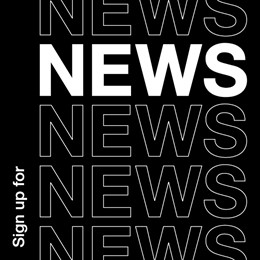The politics of music or the music in politics

Alexander Wodrich, managing director at why do birds, takes a look at the fascinating history of audio in American politics. With a seismic election fast approaching, he asks what role music can play in mobilising the electorate and winning them over to their side.
Music and advertising have always gone hand in hand. The day the radio advert was born, music accompanied the spoken message. Funnily enough, audio branding happened instantly as well. It didn’t need specialised branding agencies to state the obvious:
- Music adds emotion to the message. It is used to make products and services appear easy, natural and fun to use.
- Jingles and sung product names are more memorable than just spoken taglines or names.
An endless number of advertising music pieces and jingles have since been produced. But it then took quite a few years for a next step in advertising and music:
- The use of popular, already existing songs in advertising. The idea was to emotionally charge the campaign with either the artist’s image or with the lyrical idea behind the song.
In 1967, Buick asked The Doors for permission to adapt their number one hit, Light My Fire, and turn "Come on, baby, light my fire" into "Come on, Buick, light my fire". However, this never happened as lead singer Jim Morrison refused.
But other co-operations made it and are famous to this day. Microsoft paid an estimated three million US dollars for the usage rights of the Rolling Stones song Start Me Up for their 1995 Windows campaign. The message was perfect, and it seemed as if the song had been written for the cause and not back in 1981.
There are numerous examples of the past decades where seven-figure investments have paid off well for the brands. But how do you choose the right song? It seems quite simple. The three criteria for a successful advertising song are the song’s emotional content, its recognition value and its target group fit. But will this always work? Probably not. You still need a good story for your commercial and a good product.
Political parties have understood these criteria and recognised the power of music as well.
During their campaign appearances, candidates use music that underlines their campaign message, that everyone knows and likes. It is important that the audience can identify with the song, the artist and the lyrics. This can strongly colour the advertising message of the political candidate.
Barack Obama has used Signed, Sealed, Delivered, I’m Yours by Stevie Wonder during his campaign. The Motown classic instantly puts everybody in a good mood, the message is simple and relatable and the artist choice is clever as well, as it alludes to the black community.
The most played artist in US election campaigns is – who would have thought? – Bruce Springsteen: A patriot, the guy next door, born in the USA. A man who will have people on their feet in any stadium and would probably have good chances of becoming the next president himself, if only he wanted to.
It's easy to find lyrical hooks that fit the theme, even when the songs were written with totally different motives: We Are the Champions (Queen) for Donald Trump, Heroes (David Bowie) for Joe Biden, Power to the People (John Lennon) for Bernie Sanders, Ain’t No Mountain High Enough (Marvin Gaye) for Barack Obama…
It’s very interesting to see that none of the parties have their own unique brand sound. They do invest in their visual identities, but not in audio branding. Maybe parties must reinvent themselves every four years and don’t want to be reminded of what they did in the past. In politics, it’s all about a brighter future. No turning back. But wait a minute: Make America Great Again? It’s a nostalgia for a time that perhaps never was. I’m sure we can find a song for that.













